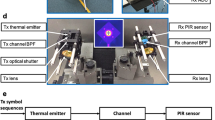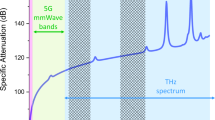Abstract
Ultra-reliable and low-latency communication (URLLC) is central to fifth-generation (5G) communication systems, but the fundamentals of URLLC remain elusive. New immersive and high-stake control applications with stricter reliability, latency and scalability requirements are now also creating unprecedented challenges for URLLC. Here we examine the limitations of 5G URLLC and propose key research directions for the next generation of URLLC, which we term extreme ultra-reliable and low-latency communication (xURLLC). xURLLC is underpinned by three concepts: the leveraging of recent advances in machine learning for faster and more reliable data-driven predictions; complementing radiofrequency signal transmission with non-radiofrequency data and passive signal reflection to combat rare events at scale; emphasizing joint communication and control co-design, as opposed to the communication-centric approach of 5G URLLC. For each of these concepts, we consider the challenges and opportunities, and illustrate the effectiveness of the proposed solutions through selected use cases.
This is a preview of subscription content, access via your institution
Access options
Access Nature and 54 other Nature Portfolio journals
Get Nature+, our best-value online-access subscription
$29.99 / 30 days
cancel any time
Subscribe to this journal
Receive 12 digital issues and online access to articles
$119.00 per year
only $9.92 per issue
Buy this article
- Purchase on Springer Link
- Instant access to full article PDF
Prices may be subject to local taxes which are calculated during checkout




Similar content being viewed by others
Data availability
The data that support the plots within this paper and other findings of this study are available from the corresponding authors upon reasonable request.
Code availability
The simulation in the section ‘ML-based energy-efficient RIS’ was implemented using TensorFlow and the rest of the simulations were based on MATLAB. The simulation settings in the section ‘Predictive AoI for ultra-reliable V2V communication’ follow from ref. 31. The section ‘VR/augmented reality perception-aware proactive network slicing’ is based on refs. 32,40. The section ‘ML-based energy-efficient RIS’ is based on ref. 65 and the SimRIS channel simulator66. The section ‘RGB-D aided mmWave received power prediction’ is based on refs. 43,44. Finally, the sections ‘ML-aided single UAV remote control’ and ‘ML-aided massive autonomous UAV control’ are based on ref. 51 and ref. 52, respectively. The detailed simulation codes of this study are available from the corresponding authors upon reasonable request.
References
Le, T.-K., Salim, U. & Kaltenberger, F. An overview of physical layer design for ultra-reliable low-latency communications in 3GPP releases 15, 16, and 17. IEEE Access 9, 433–444 (2021).
Bennis, M., Debbah, M. & Poor, V. Ultra-reliable and low-latency wireless communication: tail, risk and scale. Proc. IEEE 106, 1834–1853 (2018).
Swamy, V. N. et al. Monitoring under-modeled rare events for URLLC. In Proc. 2019 IEEE 20th International Workshop on Signal Processing Advances in Wireless Communications (SPAWC) (eds Zochmann, E. et al.) 1–5 (IEEE, 2019).
Popovski, P. et al. Wireless access for ultra-reliable low-latency communication (URLLC): principles and building blocks. IEEE Network 32, 16–23 (2018).
Mahmood, A. et al. Time synchronization in 5G wireless edge: requirements and solutions for critical-MTC. IEEE Commun. Mag. 57, 45–51 (2019).
Ji, H. et al. Ultra-reliable and low-latency communications in 5G downlink: physical layer aspects. IEEE Wirel. Commun. 25, 124–130 (2018).
Study on Physical Layer Enhancements for NR Ultra-reliable and Low Latency Case (URLLC) Technical Report 38.824 Rel-16 (3GPP, 2019).
Centenaro, M., Laselva, D., Steiner, J., Pedersen, K. & Mogensen, P. Resource-efficient dual connectivity for ultra-reliable low-latency communication. In Proc. IEEE 91st Vehicular Technology Conference (VTC2020-Spring) 1–5 (IEEE, 2020).
Liu, Y., Deng, Y., Elkashlan, M., Nallanathan, A. & Karagiannidis, G. K. Analyzing grant-free access for URLLC service. IEEE J. Sel. Areas Commun. 39, 741–755 (2021).
de Amorim, R. M., Wigard, J., Kovacs, I., Sorensen, T. B. & Mogensen, P. E. Enabling cellular communication for aerial vehicles: providing reliability for future applications. IEEE Veh. Technol. Mag. 15, 129–135 (2020).
Berardinelli, G., Mahmood, N. H., Rodriguez, I. & Mogensen, P. Beyond 5G wireless IRT for industry 4.0: design principles and spectrum aspects. In Proc. 2018 IEEE Globecom Workshops 1–6 (IEEE, 2018).
Time-sensitive Networking: A Technical Introduction White Paper (Cisco, 2017); https://www.cisco.com/c/dam/en/us/solutions/collateral/industry-solutions/white-paper-c11-738950.pdf
6Genesis Key Drivers and Research Challenges for 6G Ubiquitous Wireless Intelligence White Paper, Vol. 1 (Univ. Oulu, 2019).
Dang, S., Amin, O., Shihada, B. & Alouini, M.-S. What should 6G be? Nat. Electron. 3, 20–29 (2002).
Saad, W., Bennis, M. & Chen, M. A vision of 6G wireless systems: applications, trends, technologies and open research problems. IEEE Netw. 34, 134–142 (2020).
Viswanathan, H. & Mogensen, P. E. Communications in the 6G era. IEEE Access 8, 57063–57074 (2020).
Park, J., Samarakoon, S., Bennis, M. & Debbah, M. Wireless network intelligence at the edge. Proc. IEEE 107, 2204–2239 (2019).
Pokhrel, S. R., Ding, J., Park, J., Park, O.-S. & Choi, J. Towards enabling critical mMTC: a review of URLLC within mMTC. IEEE Access 8, 131796–131813 (2020).
Angjelichinoski, M., Trillingsgaard, K. F. & Popovski, P. A statistical learning approach to ultra-reliable low latency communication. IEEE Trans. Commun. 67, 5153–5166 (2019).
Kasgari, A. T. Z. & Saad, W. Model-free ultra reliable low latency communication (URLLC): a deep reinforcement learning framework. In Proc. IEEE International Conference on Communications (ICC) 1–6 (IEEE, 2019).
Khan, H., Butt, M. M., Samarakoon, S., Sehier, P. & Bennis, M. Deep learning assisted CSI estimation for joint URLLC and eMBB resource allocation. In Proc. 2020 IEEE International Conference on Communications Workshops 1–6 (IEEE, 2020).
Koda, Y. et al. One pixel image and RF signal based split learning for mmWave received power prediction. In Proc. 15th International Conference on Emerging Networking Experiments and Technologies 54–56 (ACM, 2019); https://doi.org/10.1145/3360468.3368176
Nishio, T. et al. Proactive received power prediction using machine learning and depth images for mmWave networks. IEEE J. Select. Areas Commun. 37, 2413–2427 (2019).
Tariq, F. et al. A speculative study on 6G. IEEE Wirel. Commun. 27, 118–125 (2020).
Matthaiou, M. et al. The road to 6G: ten physical layer challenges for communications engineers. IEEE Commun. Mag. 59, 64–69 (2021).
Hoydis, J., Aoudia, F. A., Valcarce, A. & Viswanathan, H. Towards a 6G AI-native air interface. IEEE Commun. Mag. 59, 76–81 (2021).
Dizdar, O., Mao, Y., Han, W. & Clerckx, B. Rate-splitting multiple access: a new frontier for the PHY layer of 6G. In Proc. 2020 IEEE 92nd Vehicular Technology Conference (VTC2020-Fall) 1–7 (IEEE, 2020).
Giordani, M. & Zorzi, M. Non-terrestrial networks in the 6G era: challenges and opportunities. IEEE Netw. 35, 244–251 (2020).
Rappaport, T. S. et al. Wireless communications and applications above 100 GHz: opportunities and challenges for 6G and beyond. IEEE Access 7, 78729–78757 (2019).
She, C. et al. A tutorial on ultrareliable and low-latency communications in 6G: integrating domain knowledge into deep learning. Proc. IEEE 109, 204–246 (2021).
Abdel-Aziz, M. K., Samarakoon, S., Bennis, M. & Saad, W. Ultra-reliable and low-latency vehicular communication: an active learning approach. IEEE Commun. Lett. 24, 367–370 (2020).
Park, J. & Bennis, M. URLLC-eMBB slicing to support VR multimodal perceptions over wireless cellular systems. In Proc. 2018 IEEE Global Communications Conference (GLOBECOM) 1–7 (IEEE, 2018).
Samarakoon, S., Bennis, M., Saad, W. & Debbah, M. Distributed federated learning for ultra-reliable low-latency vehicular communications. IEEE Trans. Commun. 68, 1146–1159 (2019).
Coles, S., Bawa, J., Trenner, L. & Dorazio, P. An Introduction to Statistical Modeling of Extreme Values Vol. 208 (Springer, 2001).
Holton, G. A. Value-at-Risk: Theory and Practice (Academic, 2003).
Billard, A. & Grollman, D. in Encyclopedia of the Sciences of Learning (ed. Seel, N. M.) 1474–1476 (Springer, 2012).
Ernst, M. O. & Banks, M. S. Humans integrate visual and haptic information in a statistically optimal fashion. Nature 415, 429–433 (2002).
Abdulla, M. & Wymeersch, H. Fine-grained vs. average reliability for V2V communications around intersections. In Proc. 2017 IEEE Globecom Workshops (GC Wkshps) 1–5 (IEEE, 2017).
Jaynes, E. T. Information theory and statistical mechanics. Phys. Rev. 106, 620–630 (1957).
Perfecto, C., Elbamby, M. S., Ser, J. D. & Bennis, M. Taming the latency in multi-user VR 360°: a QoE-aware deep learning-aided multicast framework. IEEE Trans. Commun. 68, 2491–2508 (2020).
Koda, Y. et al. Communication-efficient multimodal split learning for mmWave received power prediction. IEEE Commun. Lett. 24, 1284–1288 (2020).
Alahi, A., Haque, A. & Fei-Fei, L. RGB-W: when vision meets wireless. In Proc. 2015 IEEE International Conference on Computer Vision (ICCV) 3289–3297 (IEEE, 2015).
Koda, Y. et al. Distributed heteromodal split learning for vision aided mmwave received power prediction. Preprint at https://arxiv.org/abs/2007.08208 (2020).
Nishio, T., Koda, Y., Park, J., Bennis, M. & Doppler, K. When wireless communications meet computer vision in beyond 5G. IEEE Commun. Stand. Mag. 5, 76–83 (2021).
Hu, S., Rusek, F. & Edfors, O. Beyond massive MIMO: the potential of data transmission with large intelligent surfaces. IEEE Trans. Signal Process. 66, 2746–2758 (2018).
Huang, C., Alexandropoulos, G. C., Zappone, A., Debbah, M. & Yuen, C. Energy efficient multi-user MISO communication using low resolution large intelligent surfaces. In Proc. IEEE Globecom Workshops (GC Workshops) 1–6 (IEEE, 2018).
Nazemi, M., Pasandi, G. & Pedram, M. Energy-efficient, low-latency realization of neural networks through Boolean logic minimization. In Proc. 2019 ACM Asia and South Pacific Design Automation Conference 274–279 (ACM, 2019).
Lawler, E. L. & Wood, D. E. Branch-and-bound methods: a survey. Oper. Res. 14, 699–719 (1966).
Nemati, M., Park, J. & Choi, J. RIS-assisted coverage enhancement in millimeter-wave cellular networks. IEEE Access 8, 188171–188185 (2020).
Eisen, M. et al. Control aware radio resource allocation in low latency wireless control systems. IEEE Internet Things J. 6, 7878–7890 (2019).
Shiri, H., Park, J. & Bennis, M. Remote UAV online path planning via neural network based opportunistic control. IEEE Wirel. Commun. Lett. 9, 861–865 (2020).
Shiri, H., Park, J. & Bennis, M. Massive autonomous UAV path planning: a neural network based mean-field game theoretic approach. In Proc. 2019 IEEE Global Communications Conference (GLOBECOM) 1–6 (IEEE, 2019).
Perdikaris, G. Computer Controlled Systems: Theory and Applications (Intelligent Systems, Control and Automation: Science and Engineering) (Springer, 1991); https://books.google.fi/books?id=Gzxh0TYX3TEC
Sastry, S. Nonlinear Systems: Analysis, Stability and Control (Interdisciplinary Applied Mathematics) (Springer, 2013); https://books.google.fi/books?id=j_PiBwAAQBAJ
Gazi, V. & Passino, K. M. Stability analysis of swarms. IEEE Trans. Automat. Contr. 48, 692–697 (2003).
Cook, P. Conditions for string stability. Syst. Contr. Lett. 54, 991–998 (2005).
Gueant, O., Lasry, J.-M. & Lions, P.-L. Paris-Princeton Lectures on Mathematical Finance 2010 205–266 (Lecture Notes in Mathematics Vol. 2003, Springer, 2011).
Liu, D., Wang, D., Wang, F., Li, H. & Yang, X. Neural-network-based online HJB solution for optimal robust guaranteed cost control of continuous-time uncertain nonlinear systems. IEEE Trans. Cybern. 44, 2834–2847 (2014).
Lee, J. H., Park, J., Bennis, M. & Ko, Y. C. Integrating LEO satellite and UAV relaying via reinforcement learning for non-terrestrial networks. In Proc. GLOBECOM 2020 - 2020 IEEE Global Communications Conference 1–6 (IEEE, 2020).
Lee, J.-H., Park, J., Bennis, M. & Ko, Y.-C. Integrating LEO satellites and multi-UAV reinforcement learning for hybrid FSO/RF non-terrestrial networks. Preprint at https://arxiv.org/abs/2010.10138 (2020).
Shiri, H., Park, J. & Bennis, M. Communication-efficient massive UAV online path control: federated learning meets mean-field game theory. IEEE Trans. Commun. 68, 6840–6857 (2020).
Finn, C., Abbeel, P. & Levine, S. Model-agnostic meta-learning for fast adaptation of deep networks. In Proc. 34th International Conference on Machine Learning Vol. 70 (eds Precup, D. & Teh, Y. W.) 1126–1135 (PMLR, 2017); http://proceedings.mlr.press/v70/finn17a.html
Frankle, J. & Carbin, M. The lottery ticket hypothesis: finding sparse, trainable neural networks. In Proc. 7th International Conference on Learning Representations (ICLR 2019) (OpenReview.net, 2019); https://openreview.net/forum?id=rJl-b3RcF7
Lin, X. et al. All-optical machine learning using diffractive deep neural networks. Science 361, 1004–1008 (2018).
Samarakoon, S., Park, J. & Bennis, M. Robust reconfigurable intelligent surfaces via invariant risk and causal representations. In Proc. 2021 IEEE 22nd International Workshop on Signal Processing Advances in Wireless Communications (SPAWC) 301–305 (IEEE, 2021).
Basar, E. & Yildirim, I. SimRIS channel simulator for reconfigurable intelligent surface-empowered mmWave communication systems. In Proc. 2020 IEEE Latin-American Conference on Communications (LATINCOM), 1–6 (IEEE, 2020).
Sabella, R., Thuelig, A., Carrozza, M. C. & Ippolito, M. Industrial automation enabled by robotics, machine intelligence and 5G. Ericsson Technol. Rev. 2018, 1–13 (2018).
Kim, K. S. et al. Ultrareliable and low-latency communication techniques for tactile internet services. Proc. IEEE 107, 376–393 (2019).
5G; Service Requirements for Next Generation New Services and Markets Technical Report 22.261 Rel-15 (3GPP, 2018).
Acknowledgements
This research was supported in part by EU-CHISTERA project LeadingEdge, CONNECT and 6G Flagship (6GENESIS), and in part by JSPS KAKENHI grant numbers JP17H03266 and JP18K13757.
Author information
Authors and Affiliations
Contributions
M.B., J.P. and S.S. conceived the work and wrote the manuscript. T.N., A.E., H.S. and M.K.A.-A. carried out the use-case investigations.
Corresponding authors
Ethics declarations
Competing interests
The authors declare no competing interests.
Peer review
Peer review information
Nature Electronics thanks Zhiguo Ding and the other, anonymous, reviewer(s) for their contribution to the peer review of this work.
Additional information
Publisher’s note Springer Nature remains neutral with regard to jurisdictional claims in published maps and institutional affiliations.
Rights and permissions
About this article
Cite this article
Park, J., Samarakoon, S., Shiri, H. et al. Extreme ultra-reliable and low-latency communication. Nat Electron 5, 133–141 (2022). https://doi.org/10.1038/s41928-022-00728-8
Received:
Accepted:
Published:
Issue Date:
DOI: https://doi.org/10.1038/s41928-022-00728-8



